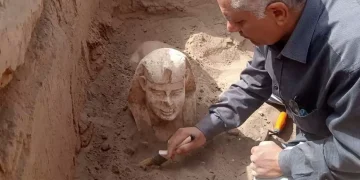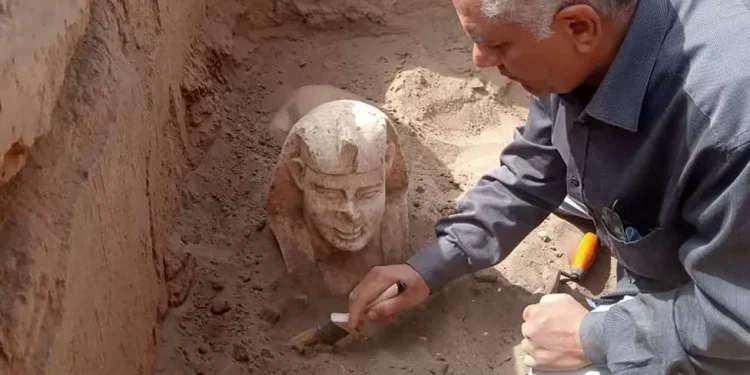By Ebi Kesiena
Archaeologists in Egypt have uncovered a tomb believed to belong to Thutmose II, a pharaoh who ruled over 3,500 years ago.
The tomb’s entrance was initially discovered in 2022, but only recently has new evidence confirmed its connection to Thutmose II, according to a statement from the Egyptian Ministry of Tourism and Antiquities on social media.
At first, researchers suspected the tomb might have belonged to a royal wife. However, the discovery of jar fragments referencing Thutmose II as the deceased ruler, along with inscriptions naming his wife, half-sister, and successor, confirmed that the burial site was his.
Decorative elements within the tomb also pointed to its royal status. Archaeologists noted a partially intact ceiling painted blue with yellow stars, a design exclusively found in the tombs of kings.
“Part of the ceiling was still intact, a blue-painted ceiling with yellow stars on it. And blue-painted ceilings with yellow stars are only found in kings’ tombs,” researcher Piers Litherland told the BBC.
Among the artefacts recovered were funerary furnishings associated with Thutmose II. His tomb is the last known burial site from Egypt’s 18th Dynasty, the same dynasty to which Tutankhamun belonged, according to antiquities officials.
Egyptian authorities described Thutmose II’s tomb as the first royal burial discovered since Tutankhamun’s in 1922. However, The New York Times noted that other pharaonic tombs were uncovered in 1940 and 2014.
“I think what they mean is the first royal tomb in the area of the Valley of the Kings or from the 18th Dynasty,” said Josef Wegener, a University of Pennsylvania professor who participated in the 2014 discovery.


































